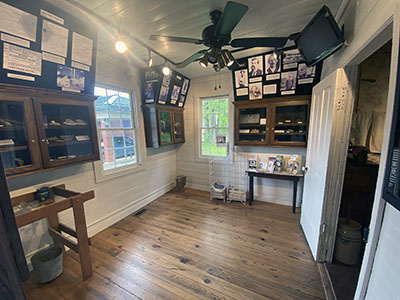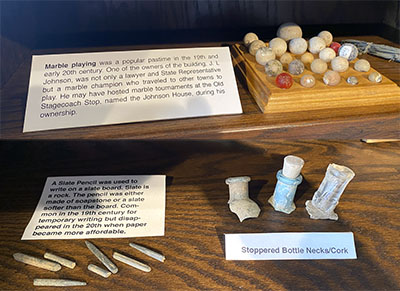 |
Instead of restoring another bedroom of the old hotel, the small room adjacent to the kitchen was chosen to display a selection of artifacts excavated from under the building. Cabinets house artifacts and overhead informational displays highlight the excavation, along with pictures and information about previous occupants. One of the five screens that was used by students to sift through the dirt and debris also holds other necessary tools for the work: a trowel, calipers, plumb bob, and bucket for dirt. |
 |


